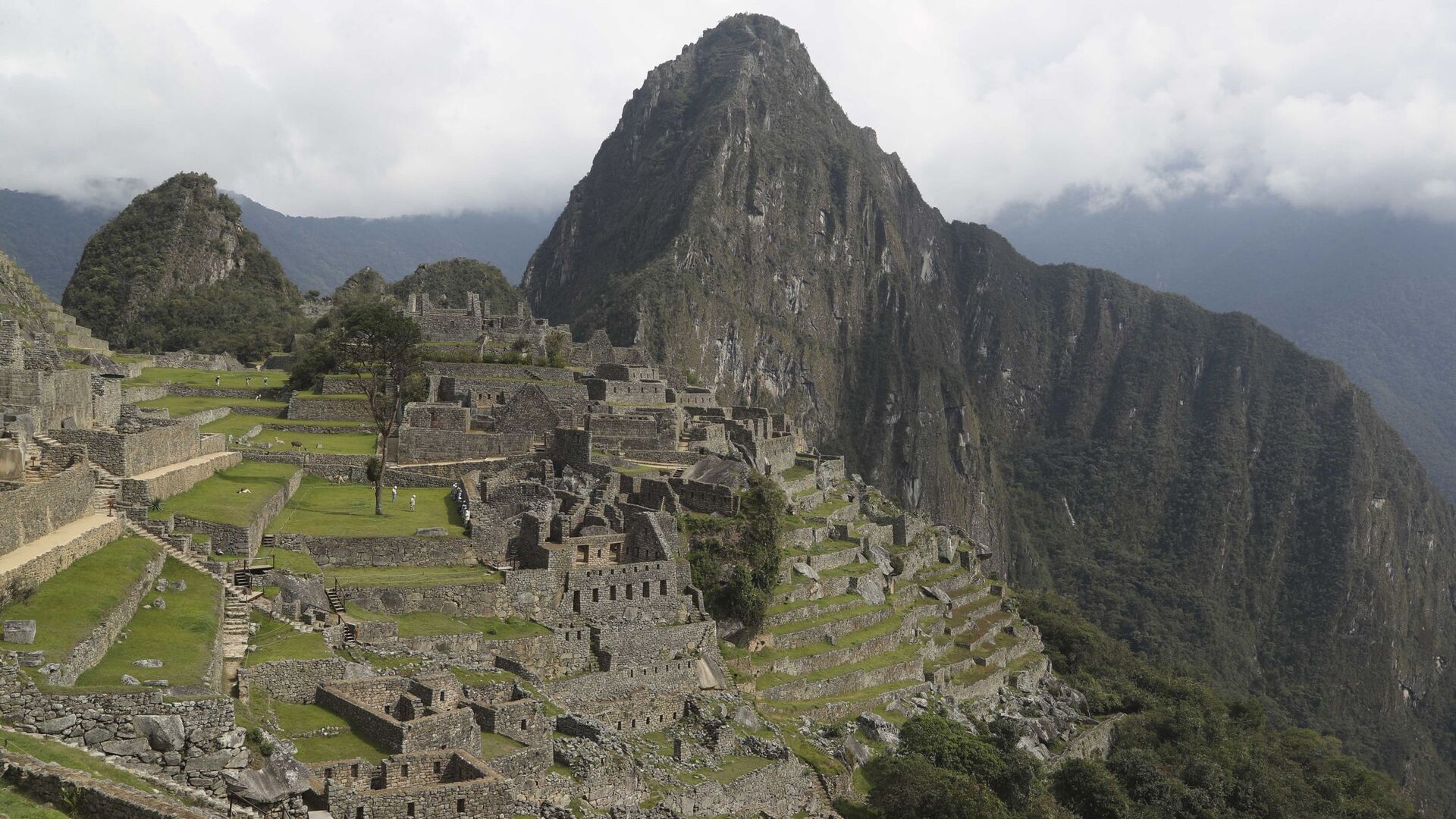https://sputnikglobe.com/20230728/ancient-dna-reveals-diverse-origins-of-incas-machu-picchu-1112232034.html
Ancient DNA Reveals Diverse Origins of Incas' Machu Picchu
Ancient DNA Reveals Diverse Origins of Incas' Machu Picchu
Sputnik International
The researchers sequenced ancient DNA from 68 individuals - 34 buried at Machu Picchu and 34 buried in Cusco, the capital city of the empire.
2023-07-28T23:51+0000
2023-07-28T23:51+0000
2023-07-28T23:52+0000
beyond politics
science & tech
machu picchu
history
ancient history
dna
dna analysis
https://cdn1.img.sputnikglobe.com/img/07e4/0b/02/1080960562_0:160:3073:1888_1920x0_80_0_0_21fc095073ec9cdc9cbf1d189ac8f0bc.jpg
An analysis of ancient DNA has shed new light on the history of Machu Picchu, the famed Lost City of the Incas, and revealed the genetic diversity found among the ancient remains at the site.Previous archaeological evidence suggested the servants at the treasured site hailed from various regions of the Inca empire, but to confirm their origins, researchers sequenced ancient DNA from the remains of 68 individuals, 34 of whom were buried at Machu Picchu and 34 others buried in Cusco, the capital city of the empire.The DNA analysis carried out by the international team of researchers revealed 17 individuals had ancestry from distant areas, including the Peruvian coast, highlands and Amazon regions, as well various other regions in Ecuador, Colombia, Brazil and Paraguay.Only seven individuals had clear genetic ties to the local highlands where Machu Picchu and Cusco are located, and the remaining 13 individuals had mixed ancestry, potentially stemming from relationships formed at Machu Picchu.Officials did not, however, confirm that any of the remains had genetic material 'local' to Machu Picchu.The findings suggest that Machu Picchu acted as a melting pot of different cultures, with individuals from various parts of the Inca empire and beyond coming to serve in roles such as "chosen women" and "chosen men." These individuals were selected at a young age and assigned to state, aristocratic, or religious service, spending their lives serving the royal estate.Surprisingly, despite their diverse origins, the buried individuals were treated equally in death, indicating a sense of equality within the community.The study also revealed that the establishment of the Inca empire played a role in drawing people from distant regions to Machu Picchu.The study was published in the journal Science Advance.
https://sputnikglobe.com/20230715/3000-year-old-condor-ceramic-piece-found-inside-sealed-peruvian-temple-1111883227.html
machu picchu
Sputnik International
feedback@sputniknews.com
+74956456601
MIA „Rossiya Segodnya“
2023
News
en_EN
Sputnik International
feedback@sputniknews.com
+74956456601
MIA „Rossiya Segodnya“
Sputnik International
feedback@sputniknews.com
+74956456601
MIA „Rossiya Segodnya“
dna testing in history, machu picchu inca civilization, what were the incas like, who were the inca, inca heritage, inca civilization, ancient dna analysis, inca origins, inca empire social structure, cusco, machu picchu incas capital
dna testing in history, machu picchu inca civilization, what were the incas like, who were the inca, inca heritage, inca civilization, ancient dna analysis, inca origins, inca empire social structure, cusco, machu picchu incas capital
Ancient DNA Reveals Diverse Origins of Incas' Machu Picchu
23:51 GMT 28.07.2023 (Updated: 23:52 GMT 28.07.2023) In the early 1900s a scientific expedition carried out in Peru's Machu Picchu led to the discovery of more than 170 burial sites, many of which were shallow graves hidden underneath boulders. It was ceramic items found inside tombs that raised questions over the site's demographic composition.
An analysis of ancient DNA has shed new light on the history of Machu Picchu, the famed Lost City of the Incas, and revealed the genetic diversity found among the ancient remains at the site.
Previous archaeological evidence suggested the servants at the treasured site hailed from various regions of the Inca empire, but to confirm their origins, researchers sequenced ancient DNA from the remains of 68 individuals, 34 of whom were buried at Machu Picchu and 34 others buried in Cusco, the capital city of the empire.
The DNA analysis carried out by the international team of researchers revealed 17 individuals had ancestry from distant areas, including the Peruvian coast, highlands and Amazon regions, as well various other regions in Ecuador, Colombia, Brazil and Paraguay.
Only seven individuals had clear genetic ties to the local highlands where Machu Picchu and Cusco are located, and the remaining 13 individuals had mixed ancestry, potentially stemming from relationships formed at Machu Picchu.
Officials did not, however, confirm that any of the remains had genetic material 'local' to Machu Picchu.
The findings suggest that Machu Picchu acted as a melting pot of different cultures, with individuals from various parts of the Inca empire and beyond coming to serve in roles such as "chosen women" and "chosen men." These individuals were selected at a young age and assigned to state, aristocratic, or religious service, spending their lives serving the royal estate.
Surprisingly, despite their diverse origins, the buried individuals were treated equally in death, indicating a sense of equality within the community.
"This could imply they were considered equal in status to one another, which in turn would suggest they were born elsewhere and arrived at Machu Picchu independently, occasionally forming relationships and having children," wrote Roberta Davidson, PhD student in Genetic Anthropology and one of authors of the study, in a commentary to a science news media.
The study also revealed that the establishment of the Inca empire played a role in drawing people from distant regions to Machu Picchu.
Machu Picchu, once the royal palace of an Inca emperor, was a significant cultural and political hub within the Inca empire, which ruled a vast region in the Andes mountain range in South America.
The palace was frequented by the royal family and guests during the dry season, while a few hundred servants lived on-site year-round and were buried in cemeteries outside the palace walls.
The study was published in the journal
Science Advance.



